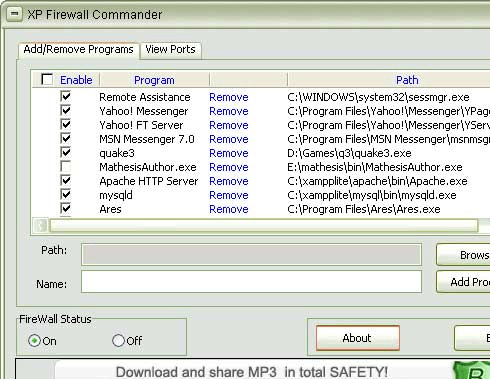Editor's review
A tool to control the Windows XP firewall.
Pros: XP Firewall Commander is a tool to manage the settings on your Windows XP Firewall. The interface allows a user to turn the Firewall ON / OFF as well as allows for fine tuning of the Firewall options – setting up exceptions, turning them ON or OFF according to the situation, blocking certain kinds of traffic / connections, blocking / allowing ports and more. An Add / Remove tab allows for easy viewing of all current exceptions and easy removal and addition of more.
Cons: The interface does not do anything more than is done by the standard firewall control in Windows XP. Although there is some finer level of control, in effect these are available through the “custom” setting in the standard control. So it really seems like the tool doesn’t do much in terms of providing additional functionality. That being the case, the tool really ought to make a case for a much better interface (easier, more intuitive). But the fact is that it doesn’t have a great interface, in fact it should be called poor. It is also inexplicable for first time users. There also doesn’t seem to be a way of setting up pre-configured protection modes, so that when you connect to a network you have to invoke the commander instead of making a simple selection of mode.
Overall: 3 stars. It allows for some finer level of control than is readily apparent on the Windows XP Firewall standard control. But in some senses is overkill because for the average user the standard control is enough, and advanced users will figure out how to find the required functions on the standard control.




Its performances are fantastic and it`s totally free of charge.
I would recommend it!
- Slick little tool - simple and does what it says.
- Better interface than the default XP firewall.
- Free.
CONS:
- a little TOO simple - functionally a little TOO basic to add much value
- Clumsy - no right-click options.
- No help screens or documentation.
- "View Traffic" does not update when connections are torn down (i.e. does not correlate to current netstat results).
- "view traffic" is confusing - responses to outbound connections appear like inbound connections. For such a simple interface things like this should be clear to a "simple" user.